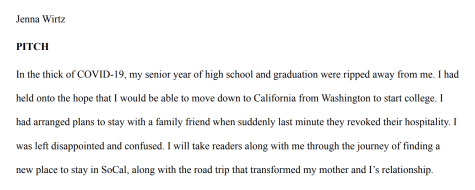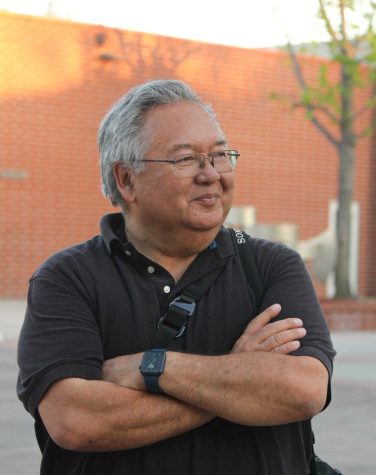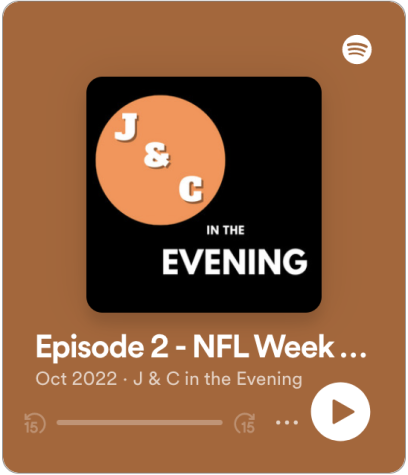Local Power: The Care and Keeping of a History Museum by Lydia Snow
Local Power: The Care and Keeping of a History Museum
Lydia Snow
October 21, 2022
Climb into the loft of the two-and-a-half brick-and-plaster building, and a pleasantly musty smell overwhelms as a two-room complex comes into view—where a prehistoric feline skeleton is conveniently nestled aside a filing cabinet. It’s clear the Brea Museum and Historical Society is an epicenter of meaning for the town. Several students sit with paper and pencil, intent looks on their faces as they study archival materials.
Up against the wall is the curator’s office, which is the size of a janitorial closet, walled in on two sides by bookshelves and on one side with a desk—where Linda Shay sits, short gray curls bouncing on her forehead and a gold bangle bouncing on her arm as she types away at an ergonomic keyboard.
As the museum’s only employee, she’s both its owner and curator. “I make pretty much every decision,” she says. She seeks to maintain the entire history of the city of Brea from its inception in 1903—no simple responsibility.
When she first arrived at her office seven years ago, the museum was a mess.
“We had an actual professional assessment and archivist assess the collection, and it was deemed grossly overcrowded,” she said. “It got all the bad marks conceivable.”
As the museum’s former curator was unfamiliar with digital cataloguing, the entire collection was stored in a physical catalog, Shay explained. So, she made up her mind to make it more accessible.
Relevancy is an active process. And to her, it all pays off.
“Our collection is really important to the community,” Shay said. She said she devotes much of her time to digitally archiving the collection’s 45,000 pieces of archival imagery, documents, and objects. “It’s a big elephant and we take little bites every week.”
“In many societies, we have missing histories. Some people’s stories are not told,” Shay added. “So it’s important that all of those stories get incorporated into the history.”
On the second story of the Little Saigon shopping center in Westminster, young, spunky, spiky-haired curator Vincent Duong awaits inside the Museum of the Republic of Vietnam. Like Shea, he also holds the power to piece stories together.
Preparing for a photoshoot, Duong dons a Vietnamese military uniform, cinching the wide pants around his ankles with a small metal chain. The strap of a metal helmet digs at his chin as he chats, his fast-talking voice underscored by the sound of clipping buckles.
The museum, which he describes as “one big historical saga, but in more in-depth and analytical in a way,” is the largest collection of Vietnamese army paraphernalia in the United States. What sets it apart is that it is not a private collection. Many Vietnamese families, such as Duong’s, are refugees. And the objects on display here remind them of the world they left behind.
All objects’ tags are attributed, either to the names of the Vietnamese soldiers who owned them or to the names of those soldiers’ family members.
Amongst the linoleum tiles and solid-green walls are rows of multi-shelved glass cases, which contain army insignias and uniforms with explanations of their ranks and who wore them.
Rather than simply resorting to commentary on the Vietnam War, the objects’ tags contain a description of the lives of their former owners: “Captain Ngo Van Phap chose to have a new dark brown uniform tailored on his return to Saigon,” one tag reads.
“I kind of understand what their perspective is like and you know, what life is like in their shoes,” says Duong, who describes himself as an analytical person. “My family were former refugees, and they lived through the era of decolonization in the Vietnam War in the Vietnam War, and they have a lot of stories to tell.”
And how does he get others as interested as he is? “We kind of had to change our strategy on how we try to get people to visit,” he said. Instead of promoting the museum through local news, he said, the staff decided to focus on internet, “because most of our visitors came from Google.”
As Duong can testify, local museums need to appeal to their visitors. Artifacts must be arranged in a way that draws visitors in; choosing them carefully is just the first step.
So, in her quest to tell a story with an element of local relevance, Shay picks out and curates objects that explain how the city of Brea came alive.
A quick pace around the museum reveals a space of intentionality, with its varnished floors, vaulted barn ceiling, and Venetian blind windows that shed slits of light onto the artifacts within: shelves stocked with footballs and photographs of team victories long past. A redwood pipe that once moved oil through the area.
At the center of the layout is a walk-around miniature replica of 1928 Brea, which Shay designed to be just high enough off the ground. She explains it was created with the intention “to help the community understand how these buildings interacted with each other, how the city was laid out.”
The Monrovia Historical Museum, which celebrates its 30th anniversary this year, is uniquely familiar with this art of piecing together objects.
The museum’s building itself is historical, built on a pool facility built in 1925 and shut down in the 1980s, and reopened with a new purpose in 1992.
Leaping up from a flat wooden bench on the far side of the lobby, white-haired, denim-clad docent and board member Oliver Beckwith welcomes with a smile and a gaze through his squarish glasses. His gentle intonation is schoolteacher-like.
“We have an honest history here,” he said, pointing to a glass case that holds 1940s-era images of a racially segregated pool. “Pools, believe it or not, segregated pools led to lawsuits and they became desegregated. And that led to desegregated schools, desegregated country.”
Pacing around the museum’s two wings, each of which was once a swimming pool locker room, he enters a room where the story of the city unfolds lit through small, high windows that let in just enough sunlight. With a “farmer’s market” stand that features a table of fake oranges, and a reconstructed room where a violin case lies open and a coat hangs on a coat hanger as if the owner is nearby, it’s a hodgepodge of evocative imitations that strive for familiarity.
He describes this setup as “artistic history,” explaining that the way to draw people into the collection is to frame it in a lens of historical meaning.
Visitors want and need to know about Monrovia’s past of racial segregation, and how its residents worked together to overcome their divisions, he said.
“We became a city that welcomes everybody,” Beckworth said. “And that worked out really well.”
Motioning toward the Red Line train exhibit, where a train track gate sits in front of a large sepia photograph of a train and a mannequin with a conductor’s cap, he establishes its place in the narrative of civil rights progress, explaining that white and black populations were once divided between either side of Monrovia’s tracks.
For the museum, forming exhibits is not a simple afterthought. “We’re not drowning in money,” Beckwith said. Careful planning with other board members is needed. The museum’s next enterprise, a new exhibition on racial diversity in Monrovia, is on its way.
Shay recently accepted a $250,000 IMLS (Institute for Museum and Library Services) grant to research the history of racial discrimination in Brea. She worked in collaboration with unvarnishedhistory.org, which brings historical education leaders together to cover historical race issues with honesty.
“It’s not a very popular topic,” she said. But Shay doesn’t mind controversy. To her, a driving factor behind the museum leadership position is trying to preserve all sides of the story.
For Duong, the driving factor is for the museum’s visitors, many of whom are refugees, to have topics to go home and talk to their families about. “We’re trying to analyze and trying to make you know, this experience more at home, especially to the Vietnamese American, especially a younger generation.”
For Beckworth, it’s for people to think more about how the world works. Motioning to a World War I and World War II display with mannequin soldiers and a Rosie the Riveter poster, he explains that it may prove alarming to certain people. “War is a terrible thing. It hurts,” he said. “So that opens up great discussions.”
As she sits surrounded by her work of the past seven years, Shay answers the question of why any of it matters. Why put all that time into building those museum exhibits? “If we know where we are today, we have to understand how we got there,” she says, leaning back in her ergonomic office chair.
“And it wasn’t because of one single event,” Shay said. “It was a combination of many, many events. And each person influenced that.”
“Small museums are the heartbeat of every city,” she declared.
Behind each one of those heartbeats is a plethora of careful efforts towards storytelling—efforts which come together artifact by artifact, display by display, bit by bit.
Vincent Duong – Volunteer and curator, Museum of the Republic of Vietnam 714-418-9640
Linda Shay – Executive Director and Curator, Brea Museum and Historical Society [email protected]
Oliver Beckwith – Docent and board member, Monrovia Historical Museum (626) 357-9537









